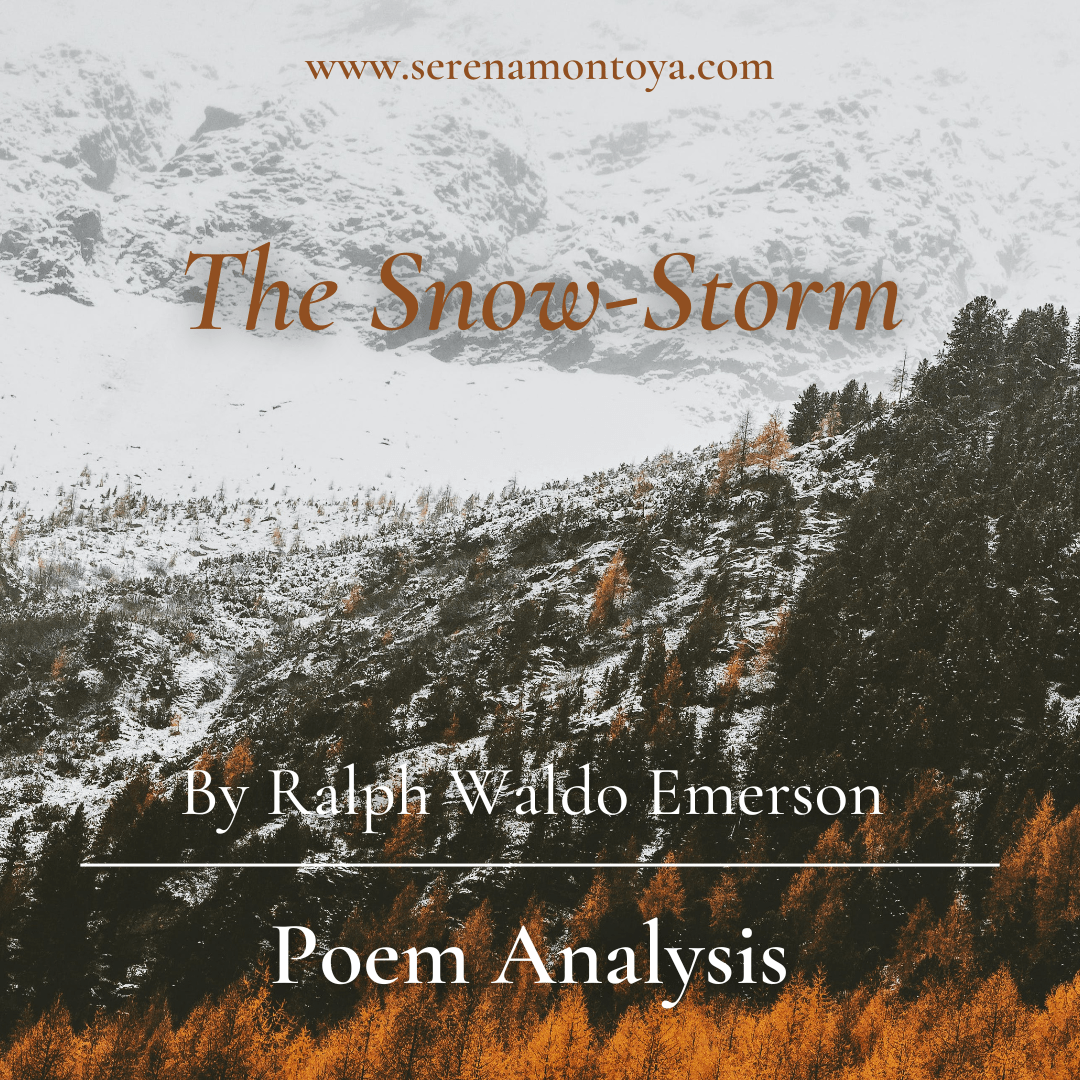The snow storm by ralph waldo emerson – In Ralph Waldo Emerson’s evocative poem “The Snow-Storm,” nature’s raw power and human resilience intertwine, offering a profound exploration of the human experience. Through vivid imagery and symbolism, Emerson delves into themes of beauty, wonder, and the transformative nature of adversity.
The poem’s exploration of nature’s duality, both destructive and transformative, mirrors Emerson’s transcendentalist philosophy, emphasizing the interconnectedness of all living things and the importance of embracing the beauty and power of the natural world.
1. Introduction to Ralph Waldo Emerson’s “The Snow-Storm”

Ralph Waldo Emerson’s “The Snow-Storm” is a renowned poem that explores the transformative power of nature and the human experience in the face of its formidable forces. Published in 1841, it is considered a seminal work in American transcendentalism, reflecting Emerson’s belief in the inherent divinity of nature and the individual’s connection to the universe.
Main Themes and Ideas
The poem delves into themes of beauty, wonder, and the sublime, exploring the awe-inspiring power of nature and its capacity to evoke both fear and reverence. It also examines the human experience of solitude, self-reliance, and the search for meaning in the face of nature’s vastness.
2. Symbolism and Imagery in the Poem

Use of Snow and Winter Imagery
Emerson employs snow and winter imagery throughout the poem to convey the poem’s themes. The snowstorm becomes a symbol of nature’s untamed power, its relentless assault representing the challenges and obstacles that humans must confront. At the same time, the snow’s beauty and purity evoke a sense of wonder and awe, highlighting the transformative potential of nature.
Symbolism of the Storm
The storm itself serves as a metaphor for both nature’s destructive force and human resilience. Its relentless fury represents the challenges that life presents, while the speaker’s ability to endure and find beauty within it suggests the indomitable spirit of humanity.
Other Symbols and Metaphors
Emerson also employs other symbols and metaphors in the poem, such as the “tent of snow” and the “veiling mist,” which represent the protective and transformative power of nature. The “dark sky” and “white landscape” symbolize the contrast between the challenges and the beauty that nature presents.
3. The Role of Nature in the Poem
Nature as a Destructive Force, The snow storm by ralph waldo emerson
Emerson portrays nature as a destructive force through the relentless snowstorm. The storm’s fury threatens to overwhelm the speaker, highlighting the fragility of human life in the face of nature’s power.
Nature as a Transformative Force
Despite its destructive nature, Emerson also presents nature as a transformative force. The snowstorm ultimately leads to a sense of renewal and rebirth, as the speaker emerges from the storm with a renewed appreciation for the beauty and wonder of the world.
Emerson’s Transcendentalist Philosophy
The poem reflects Emerson’s transcendentalist philosophy, which emphasized the inherent divinity of nature and the individual’s connection to the universe. The speaker’s journey through the storm represents the individual’s quest for self-discovery and unity with the natural world.
4. The Human Experience in the Poem

The Speaker’s Journey
The poem follows the speaker’s journey through the snowstorm, from initial fear and awe to eventual acceptance and wonder. The speaker’s experiences reflect the human experience of confronting challenges, finding beauty in adversity, and seeking meaning in the face of nature’s power.
Solitude and Self-Reliance
The poem explores themes of solitude and self-reliance as the speaker confronts the storm alone. The speaker’s ability to endure and find beauty within the storm suggests the importance of self-reliance and the human capacity for resilience.
The Search for Meaning
The poem also delves into the human search for meaning in the face of nature’s vastness. The speaker’s journey through the storm becomes a metaphor for the human quest for purpose and understanding in the face of life’s challenges.
5. Literary Devices and Techniques
Metaphor, Simile, and Personification
Emerson employs various literary devices in the poem, including metaphor, simile, and personification. The snowstorm is personified as a “wild reveler” and a “giant,” giving it human qualities and emphasizing its overwhelming power.
Imagery and Symbolism
The poem is rich in imagery and symbolism, using vivid descriptions of the snowstorm and its effects on the speaker. The snowstorm’s “white veil” and “dark sky” create a striking contrast, symbolizing the interplay between beauty and terror.
Structure, Rhythm, and Rhyme Scheme
The poem follows a loose, irregular structure, with varying line lengths and stanzas. The rhythm and rhyme scheme contribute to the poem’s dynamic and evocative quality, enhancing its emotional impact.
6. Critical Reception and Legacy
Critical Reception
Upon its publication, “The Snow-Storm” received mixed reviews. Some critics praised its vivid imagery and powerful themes, while others criticized its lack of traditional form and structure.
Influence on American Literature
Despite the initial mixed reception, “The Snow-Storm” has become a significant influence on American literature. Its exploration of nature, the human experience, and transcendentalist philosophy has resonated with generations of readers.
Enduring Legacy
Today, “The Snow-Storm” continues to be studied and appreciated as a classic work of American poetry. Its themes of beauty, wonder, and the human experience in the face of nature’s power remain relevant and evocative, ensuring its enduring legacy in literary studies.
Helpful Answers: The Snow Storm By Ralph Waldo Emerson
What is the significance of the snowstorm in the poem?
The snowstorm serves as a powerful symbol of nature’s untamed force and the challenges it poses to human beings. It also represents the transformative power of adversity, as the speaker emerges from the storm with a renewed sense of wonder and resilience.
How does Emerson use imagery to convey the poem’s themes?
Emerson employs vivid imagery of snow, wind, and cold to create a sensory experience that immerses the reader in the harshness of the storm. These images also symbolize the challenges and obstacles that humans face in the face of nature’s power.
What is the role of the speaker in the poem?
The speaker serves as a representative of the human experience, embodying the struggles and triumphs of facing adversity. Through the speaker’s journey through the storm, Emerson explores themes of solitude, self-reliance, and the search for meaning.

